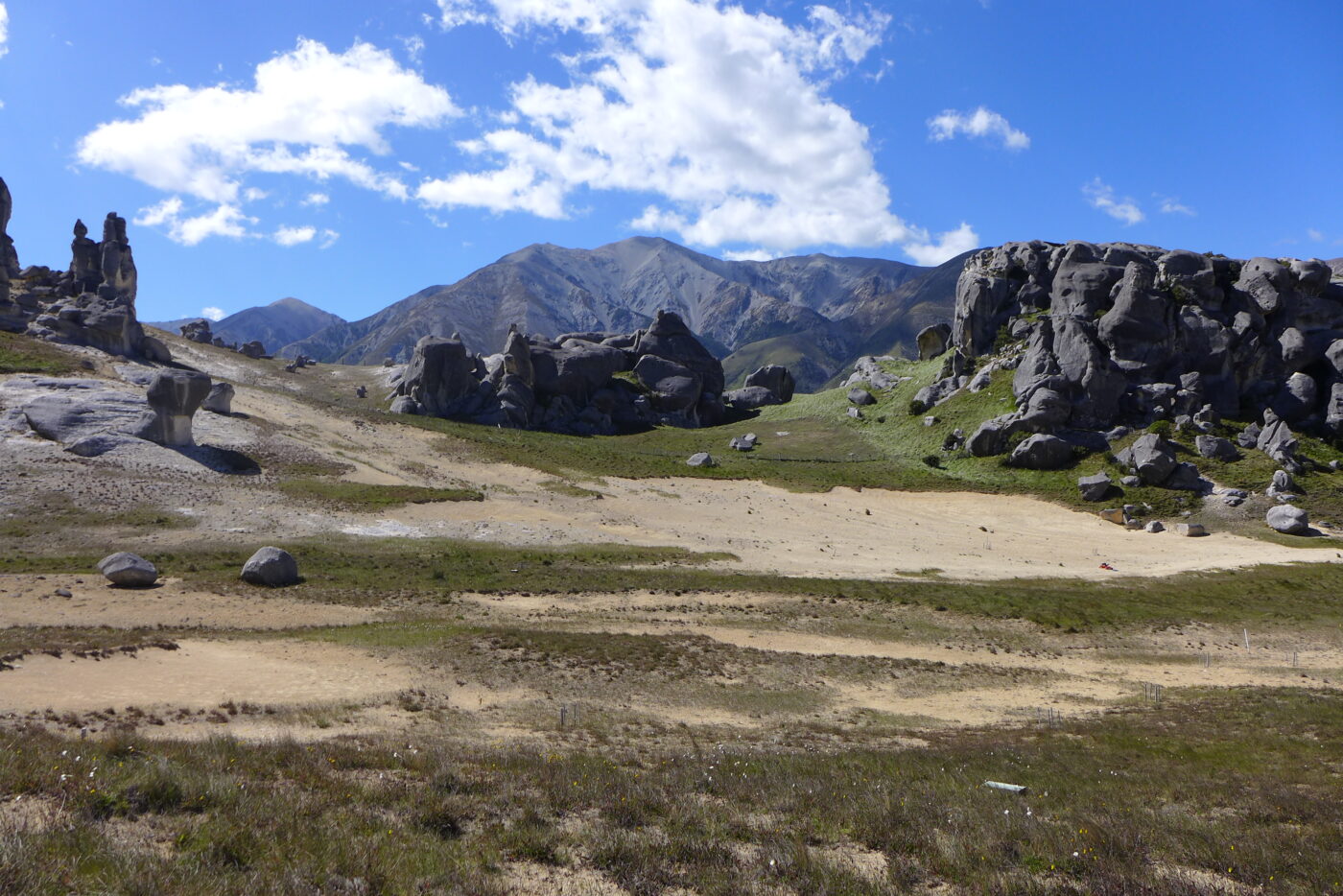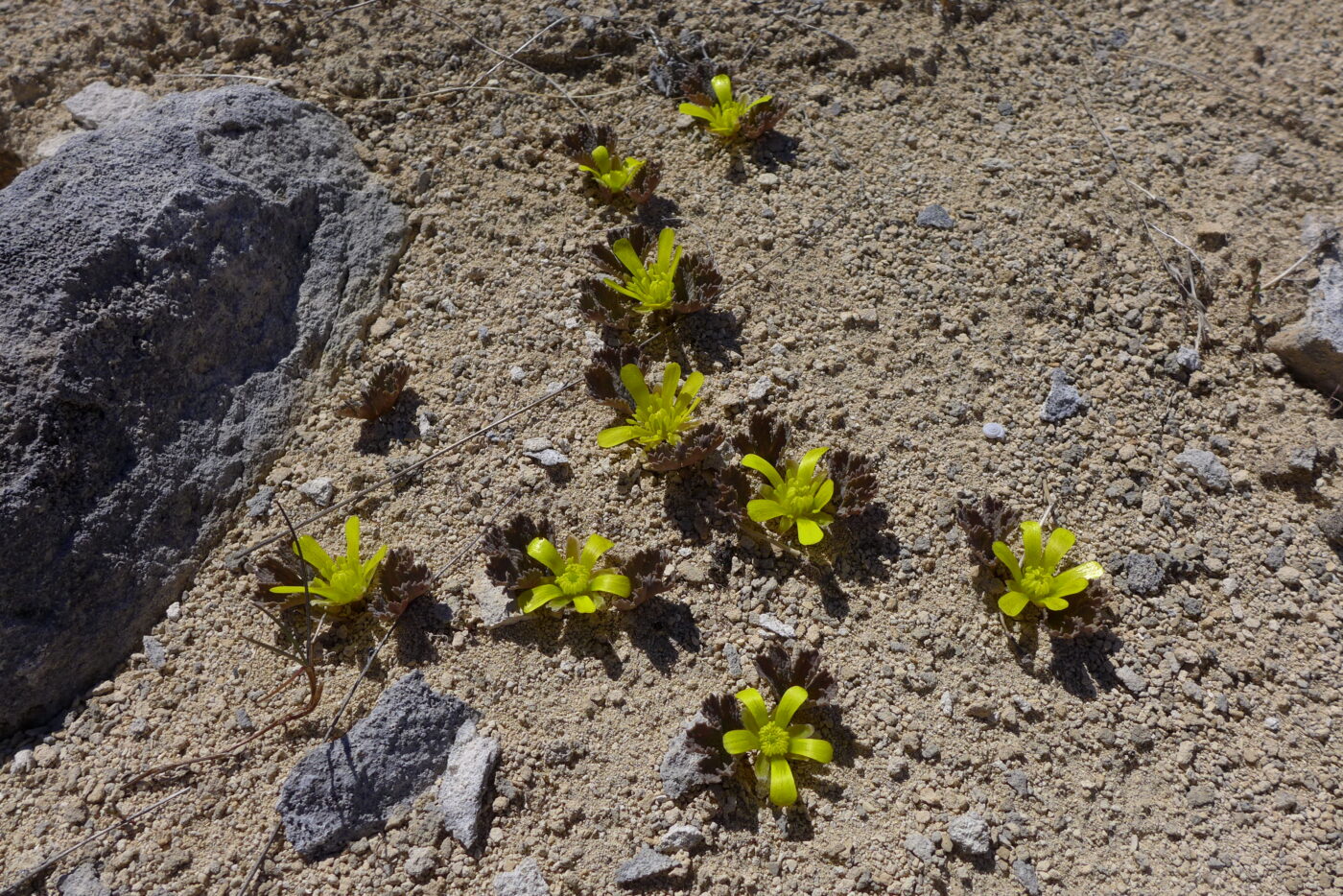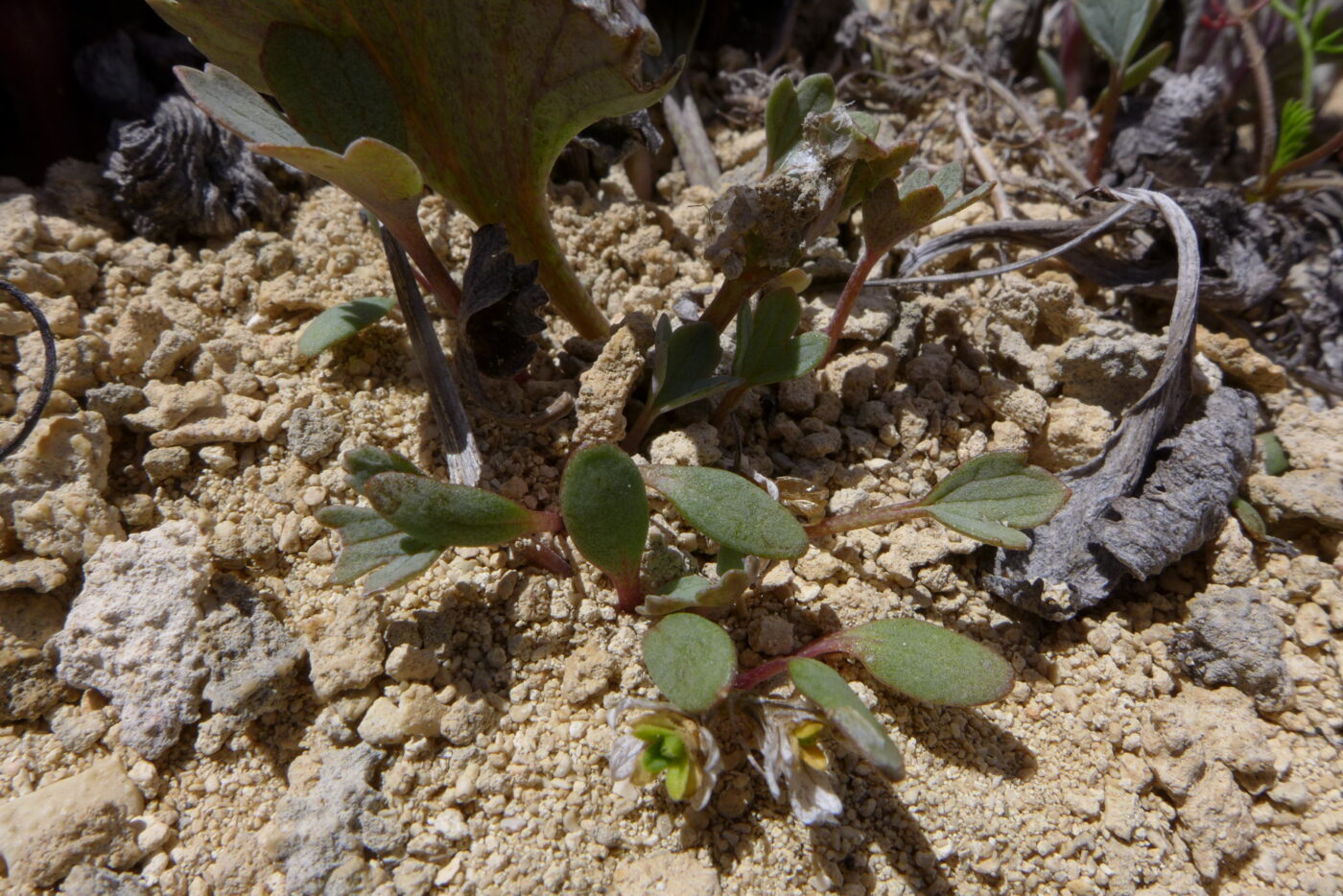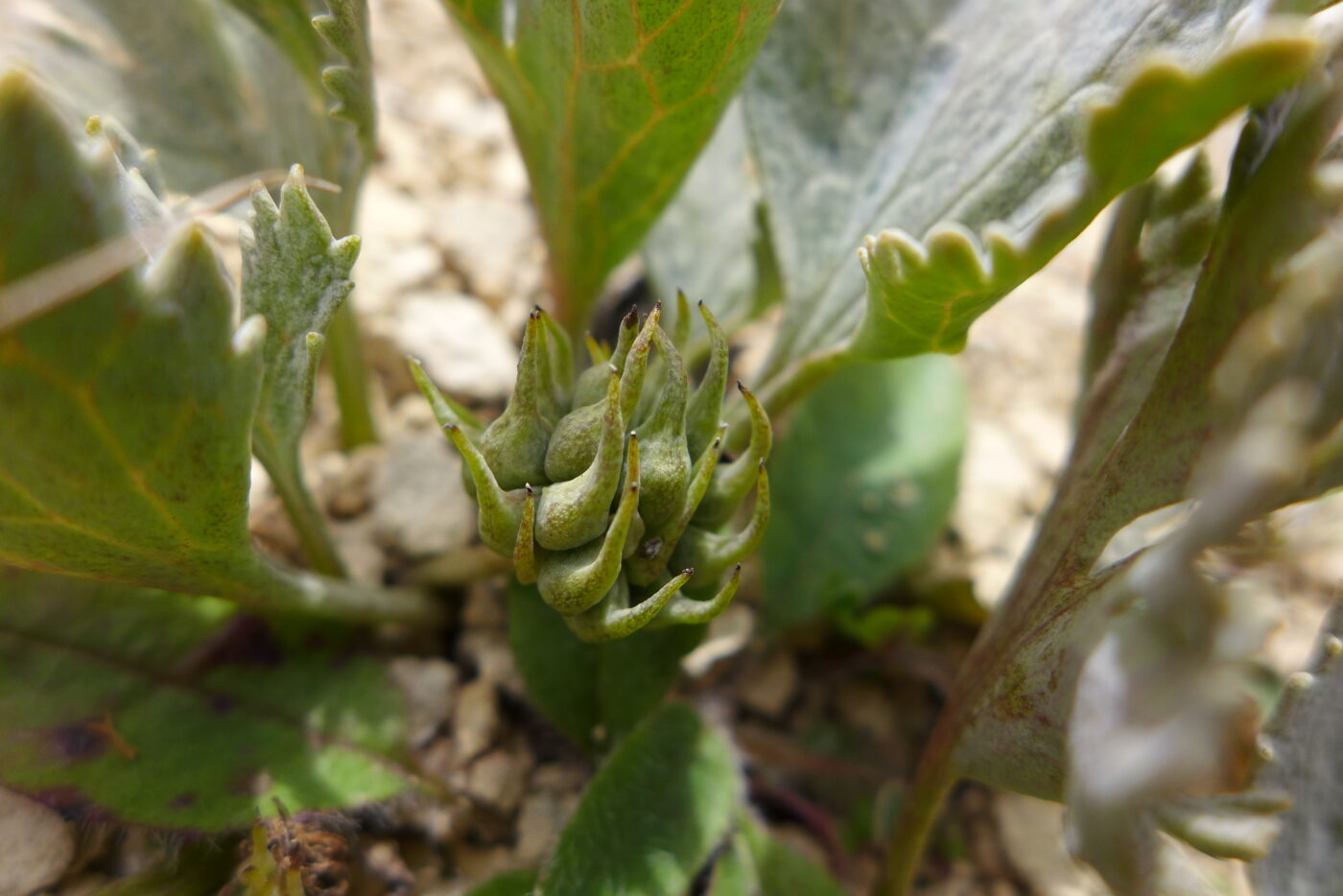In a small, montane basin surrounded by limestone bluffs and tors, around 70 Castle Hill buttercup (Ranunculus paucifolius) plants nestle amongst the scree. This beautiful basin is the only place on the planet where the Critically Endangered Castle Hill buttercup grows. The basin and the buttercup were protected as a Nature Reserve in 1954 – named after Lance McCaskill, who was instrumental in its establishment. It was the first reserve in New Zealand to be established for the purpose of protecting a native plant.

As one of the rarest plants in New Zealand, Castle Hill buttercup is at extreme risk of extinction. Not only are the plants a tasty meal for hares and rabbits, but invasive weeds can smother the plants and stabilise the mobile scree in which they live. To compound the problem, seedlings haven’t been recorded since at least 1978, and possibly earlier.

In early January 2022, I headed to the reserve to collect buttercup seeds for a Department of Conservation-funded research project. It was a beautiful, blue-sky summer day in the Canterbury high country, with views of the surrounding mountains, and a resident kārearea (New Zealand falcon) for company. While on my hands and knees searching for seeds, I suddenly noticed a little cluster of seedlings nestled between the leaves of a buttercup plant. A buzz of excitement ran through me. There was no doubt in my mind – these were Castle Hill buttercup seedlings. Their bronze foliage, the distinct and beautiful network of veins visible on the upper leaf surface, the thick – almost fleshy – lobed leaves, combined with the red stems, were unmistakable.

As I photographed the seedlings, I knew it was a momentous discovery – not only because seedlings hadn’t been seen in nearly half a century, but also because this species struggles to reproduce. Of the 69 plants I counted in the reserve in the summer of 2021-2022, 52 flowered but only 24 produced any seeds – and only six had more than 50 seeds. To make matters worse, the seeds are difficult to germinate and the few nursery-raised seedlings produced seldom survive.

I found seven buttercup seedlings that day. Prompted by my discovery, Department of Conservation (DOC) rangers Danny Kimber and Janelle Dickson visited the reserve a week later and found a further 5 seedlings. During a brief search in December 2022 I found newly emerged Castle Hill buttercup seedlings, although fewer than the previous year. Seedlings may have been emerging undetected for some time. Nevertheless, my research suggests that intensive weeding undertaken by DOC since 2008 has enhanced flowering, seed production, seedling establishment, and survival of Critically Endangered limestone plants such as Castle Hill buttercup. Recent fencing of the reserve to keep out hares and rabbits may also have helped.
The discovery of seedlings provides a glimmer of hope that the Castle Hill buttercup may be able to self-propagate, and increases its prospects for long-term survival.